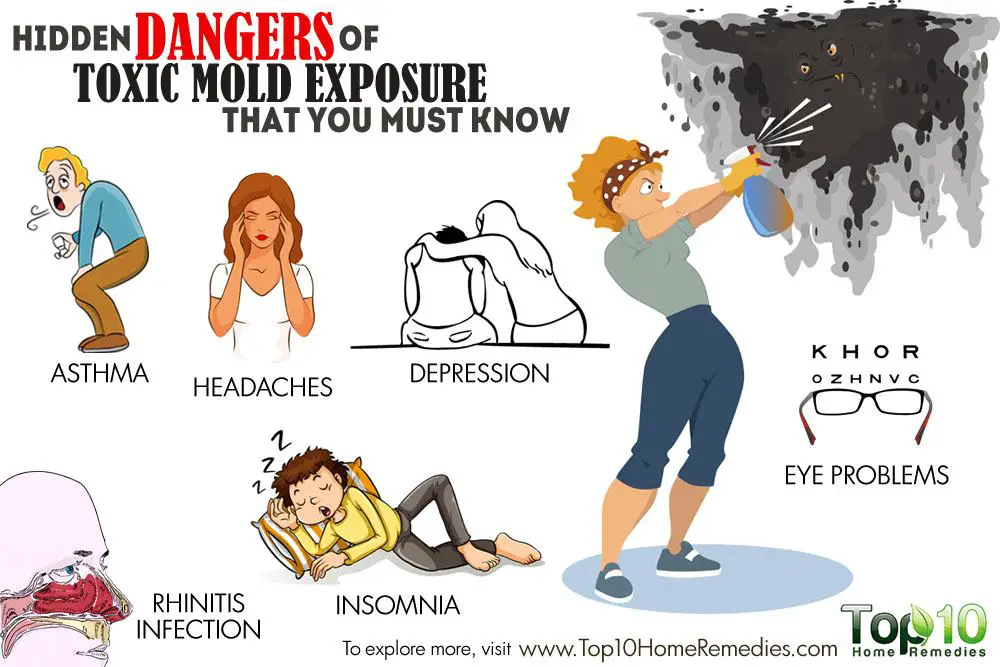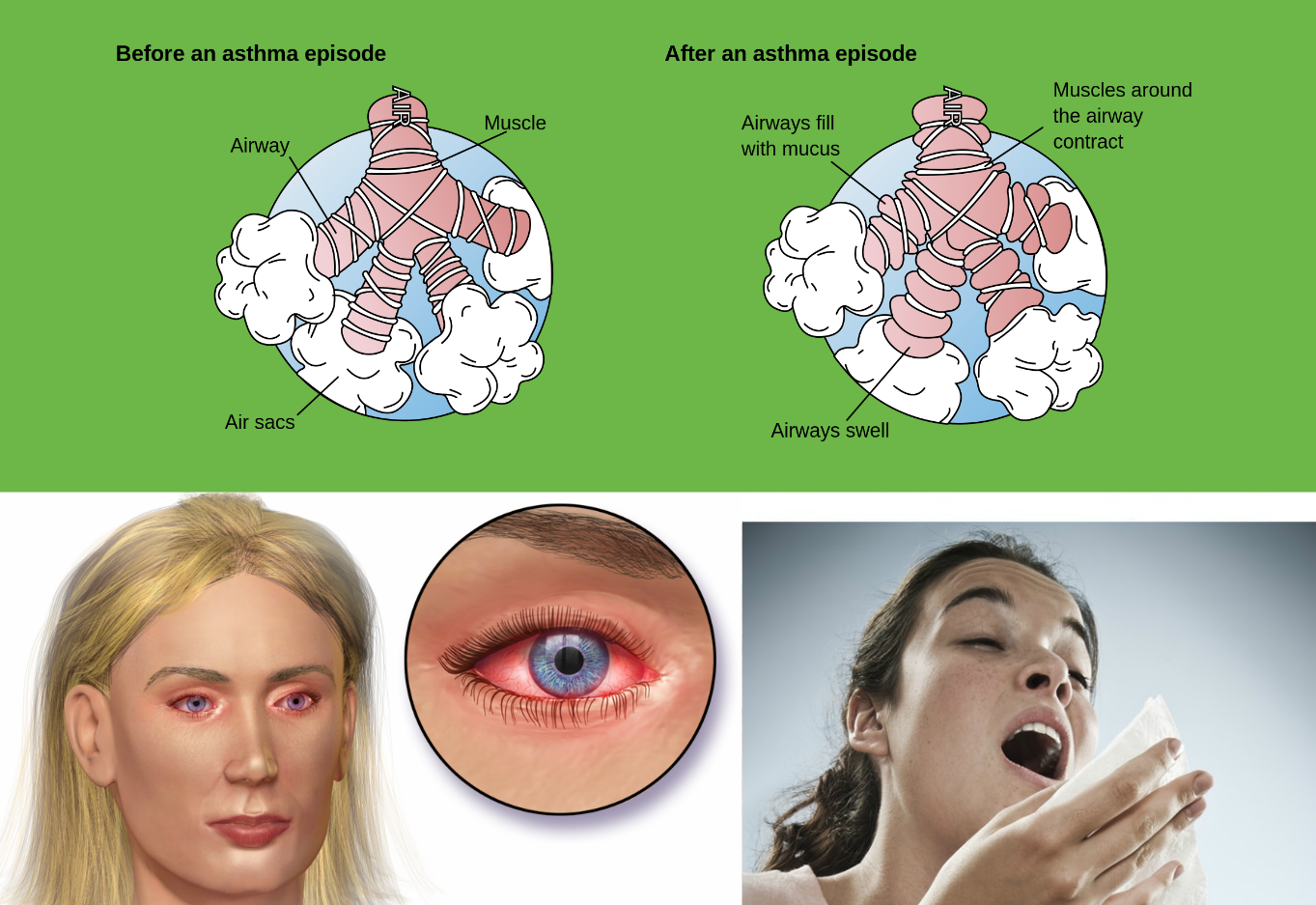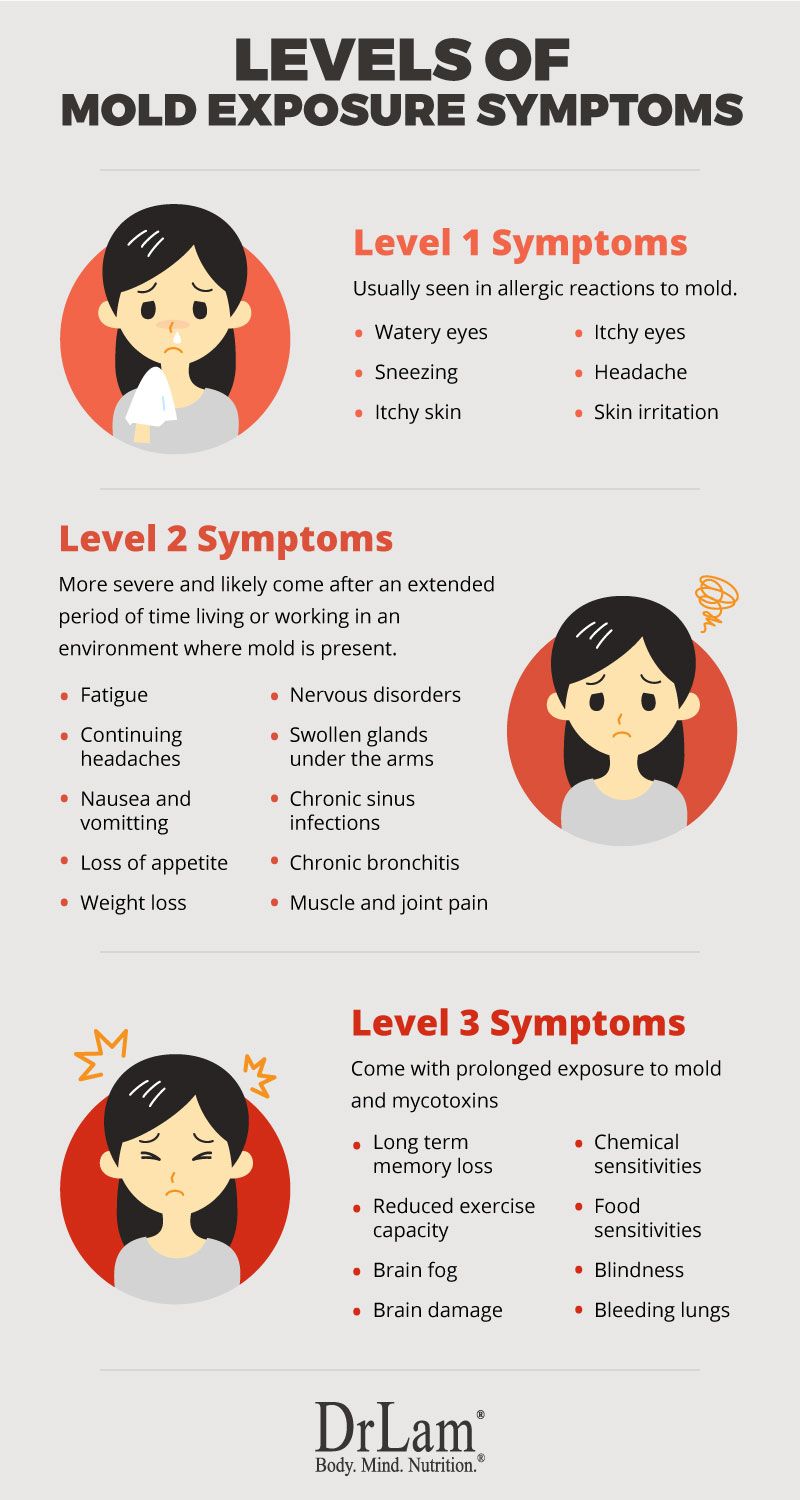Problems With Clinical Studies
Such findings may explain the confusing results of earlier studies. For example, some authors have claimed links between childhood asthma and damp, moldy housing . While retrospective questionnaires reported more wheezing, cough, and chest cold symptoms in children from affected houses, the degree of bronchospasm was not different between groups. Thus, despite the claim that there was a causal association between moldy houses and wheezing, there was no supporting objective evidence. Some studies which claim that moisture and mold were associated with respiratory infections, cough, and wheezing also fail to show differences in asthma prevalence between case and control schools . Other authors report that despite claims of symptoms being more prevalent in case groups , actual asthma prevalence was no different .
What Are The Effects Of Breathing In Mold: An Introduction
Home » Blog » What are the Effects of Breathing in Mold: An Introduction
What are the Effects of Breathing in Mold
Most people know that mold is not good for them or their homes. However, few people realize the specific health risks associated with mold exposure. Mold exposure can come with a variety of symptoms and illnesses. Learn about the many negative effects of breathing in mold.
The Basics of Mold Exposure
Mold isnt stationary. As mold grows, it produces airborne substances. Those substances can be allergens that cause discomfort and illness for individuals sensitive to the allergens. Allergens are the most common cause of the side effects that come with breathing in mold.
But its not only allergens that can be detrimental to your health. In addition to producing allergens, mold can also produce mycotoxins. Although the mold itself isnt toxic, the mycotoxins are. They can cause a variety of health issues. In extreme cases, they can cause death.
Not all types of mold produce mycotoxins. Even mold that has the potential to produce them might not do so. You could live with toxic mold and not experience health issues. However, the potential is there.
Researchers are still trying to understand what makes toxic mold produce mycotoxins. Furthermore, they are trying to understand why certain individuals are so sensitive to allergens and mycotoxins.
Common Effects of Breathing in Mold
Severe Reactions
Scientific Evidence of the Effects of Breathing in Mold
How Can I Be Exposed To Mold
People are exposed to molds every day, usually by touching or breathingthem. Because molds naturally exist outdoors and indoors, living in a totallymold-free environment is practically impossible. As molds grow, spores can bereleased into the air where they can be easily inhaled. People who inhale largenumbers of spores may get sick. Possible health concerns are an importantreason to prevent mold growth and to clean up molds in indoor environments.
Don’t Miss: How To Remove Mold In Basement
Mold Inspection & Mold Testing
There is a difference between a mold inspection and mold testing.
A mold inspection is a visual assessment of an area to determine whether mold is present.
Mold testing is when a certified mold inspector conducts scientific air sampling and collects samples that will be analyzed in a lab. This typically takes place when you cant see the mold but suspect it may be present.
How Are Mold Allergies And Exposure Diagnosed

There are no proven tests that show when or where you may have been exposed to mold.
But your doctor may check for mold allergies by reviewing your symptoms and performing one of the following tests:
- Blood test. Your doctor takes a blood sample and then sends it to a laboratory to measure the number of certain antibodies, which can indicate your immune systems sensitivity to different mold species.
- Skin prick test. Your doctor takes a small amount of mold and applies it to your skin using a tiny needle. Your skin will break out in bumps, a rash, or hives if youre allergic to that type of mold.
Recommended Reading: Removing Mold On Bathroom Ceiling
You May Like: How To Stop Mold From Growing On Wood
How Do Molds Get In The Indoor Environment And How Do They Grow
Mold is found both indoors and outdoors. Mold can enter your home through open doorways, windows, vents, and heating and air conditioning systems. Mold in the air outside can also attach itself to clothing, shoes, and pets can and be carried indoors. When mold spores drop on places where there is excessive moisture, such as where leakage may have occurred in roofs, pipes, walls, plant pots, or where there has been flooding, they will grow. Many building materials provide suitable nutrients that encourage mold to grow. Wet cellulose materials, including paper and paper products, cardboard, ceiling tiles, wood, and wood products, are particularly conducive for the growth of some molds. Other materials such as dust, paints, wallpaper, insulation materials, drywall, carpet, fabric, and upholstery, commonly support mold growth.
How Can You Tell If Theres Mold In Your Lungs
If your exposure to mold is fairly minimal, chances are you may not even experience any symptoms. For more prolonged cases of exposure, the symptoms are generally recognizable across the board: sneezing, coughing, wheezing, chest tightness or discomfort, and shortness of breath are all strong indicators that there are mold spores in your lungs.
The issue here is that all of these symptoms can be found in a variety of illnesses or allergic reactions, so it can be difficult to directly pin down mold exposure as the cause. Pay close attention to your symptoms, as well as when they started and how they change. Make a mental note of when you discovered mold growing around you, how long you were around it and whether or not you had any protection . If you fear at all that there may be mold in your lungs, dont hesitate contact medical professionals and let them know whats going on. Its always better to be safe than sorry.
Mold exposure can potentially cause serious problems, but most healthy people have nothing to worry about aside from some uncomfortable, temporary symptoms. If youre worried about mold in your home, contact your local professional to learn what you can do about it.
Don’t Miss: Best Way To Kill Mold In Basement
When Should You Test Your Home For Mold Exposure
According to the U.S. Environmental Protection Agency , if visible mold is present on inspection, testing is usually unnecessary. There are no Environmental Protection Agency or government standards that have been established for mold or mold spore levels, so it is impossible to prove that a building or room complies with any health regulations concerning mold exposure. Likewise, the CDC does not recommend routine sampling and testing of mold in the home. Health officials haven’t defined tolerable or acceptable limits of mold exposure for humans, and since individuals vary in their susceptibility to mold, testing cannot reliably predict the degree of health risks from any occurrence of mold.
When mold has previously been identified and cleanup procedures have been undertaken, sampling and testing may be carried out if necessary by qualified professionals to determine that adequate cleaning of a building has occurred.
How Can You Tell If Mold Is Making You Sick
It can be hard to distinguish common mold exposure symptoms from those of an infection or a more serious condition. Many of these illnesses share a lot of the same side effects, and you may not be able to tell that youre sick until several days after exposure.
While most healthy people may only experience the temporary symptoms listed above, those with more compromised or weakened immune systems are at a greater risk of becoming sick after mold exposure. People in this group include the elderly, pregnant women, babies, young children and those with chronic health conditions.
There are a few serious illnesses that can be caused by mold exposure, but each usually has its own telltale symptoms that separates it from the others. Remember: the most common sign of an infection is a fever, so check your temperature regularly if you fear you may be sick.
These are just a few examples of illnesses that can be caused by molds:
- Aspergillosis an infection that typically comes after exposure to molds in the aspergillus family. These molds are often found in decaying vegetation, such as dead leaves, compost piles and stored grain. People who have gone through chemotherapy, had an organ transplant or have compromised lungs are the most likely demographic to contract aspergillosis. Common side effects include coughing , fever, chest pain, difficulty breathing, chills, shock or kidney/liver problems.
Read Also: Get Rid Of Mold In Bathroom Ceiling
What Do Mycotoxins Do
These chemical substances can cause many health problems ranging from mild to severe. Even if you are not allergic to mold, you can be affected by mycotoxins.
Mycotoxins can be absorbed by the body in a number of ways including: through the skin, the airways , and through the intestinal lining . Detrimental health effects caused by mycotoxins can range from acute poisoning to long-term effects such as immune deficiency and cancer.2 Chronic disease sufferers, such as people with immunosuppressive disorders or underlying lung disease may be more sensitive to molds and mycotoxins in their environment.4
One of the main ways people and pets become poisoned by mycotoxins is through eating contaminated foods. Foods such as apples, cereal grains, coffee beans, nuts, spices, dog and cat food, and more can become contaminated with fungi that produce mycotoxins.
To learn more about mycotoxins in foods check out the World Health Organizations article: Mycotoxins.
Did you know that toxic mold can affect your pets as well? To learn more about how mold affects your pets check out our article: Mold and Pets 10 Things You Most Likely Didnt Know.
Measurement Of Fungal Products In The Patient’s Environment
Structural fungal materials
Mycotoxins
Stachybotrys chartarumStachybotrysVOCs
- Sampling of both indoor and outdoor air for mold spores provides a measure of potential exposures and can be useful in certain clinical conditions, but it has many shortcomings.
- Bulk, surface, and within-wall cavity measurement or molds or mycotoxins, although having potential relevance for other purposes, cannot be used to assess exposure.
Recommended Reading: Bathroom Ceiling Mold
Mold In The Workplace
Some workplaces, such as poorly ventilated factories, greenhouses, and vineyards, may house large amounts of mold.
Any workplace that contains lots of old paper products, such as used book stores, may be a source of mold. Paper contains cellulose, an organic food source that certain mold species thrive upon. Old books thatve been housed in humid conditions may be filled with millions of mold spores.
Farms and stables may also harbor large amounts of moldy hay. Mold toxins often develop in hay after a delayed harvest. Hay that contains mold is dangerous for humans to breathe in and for horses to eat.
What About Tiny Mold Toxins Aka Mycotoxins

As mentioned above, though the Stachybotrys spores may be sticky and not easily airborne, there are other airborne contaminants to worry about: tiny fragments of mold and special toxins called mycotoxins. These contaminants may cause illness in those who are exposed, with mycotoxins being the most concerning.
You can think about mycotoxins as the molds defense: they are used for protection from environmental threats. Mycotoxins are minute organic compounds as small as 0.03 microns. These tiny molecules can stick to particles already floating through the air. Studies have found Stachybotrys mycotoxins on mold fragments that have broken off from a mold colony after it has been disturbed . This can be harmfulairborne particles less than 1.0 microns are easily breathed into the respiratory system, where they can cause irritation and potential allergic reactions. If this occurs, mycotoxins could accumulate onto local tissue and ultimately enter the bloodstream. The study by Brasel cited above showed that trichothecenes could be measured in the blood of people exposed to an indoor environment that had Stachybotrys.
Stachybotrys creates a class of mycotoxins referred to as trichothecenes. Trichothecenes have been widely studied and have been proven to be detrimental to the health of humans, animals and plants. In fact, trichothecenes have been investigated for the purpose of biological warfare needless to say, they are not something to which you want to be exposed.
Don’t Miss: Getting Mildew Off Leather
Does Mold Cause Nasal Congestion
Nasal congestion, otherwise known as a stuffy nose, can happen to you regardless of whether or not you have allergies. Often, a stuffed up nose can be the result of a cold, the flu or dry air and shouldnt be a cause for concern. However, if you notice recurring and persistent nasal congestion, particularly at night, then there may be something in your environment thats causing your body to react this way. One of the most common reasons for a stuffy nose is mold, and if you experience this repeatedly over a long period of time, you likely have a mold problem somewhere in your house one that should be remediated as soon as possible.
What Are The Symptoms Of Mold Exposure
Mold allergies are progressive. The more contact you have, the more likely you are to experience severe symptoms.
In some instances, no symptoms or only vague symptoms of mold exposure may occur. These can go unnoticed, especially in babies.
Even without immediate, noticeable symptoms, long-term health effects, such as asthma, have been associated with mold. Its not currently known whether this is a direct cause of mold or merely an association.
Mold may cause:
- skin irritation
- sporotrichosis, a skin infection that starts out as a small pink, red, or purple bump on the skin
- itchy, red eyes
You May Like: Mold Growing In Bathroom Ceiling
How Long Do Mold Symptoms Last
The tricky thing about mold exposure is that its different for each person. The amount of time mold exposure symptoms persist depends on:
- What type of mold they are exposed to,
- How long the exposure has been,
- How well their bodies eliminate toxins
Those who process toxins well can see their symptoms disappear as quickly as a few days.
Others who eliminate toxins slowly can experience symptoms for much longer. They could be ill for months or even years after the source of mold is eliminated.
The Dangers Of Constant Exposure To Mold
There are many dangers associated with constant exposure to mold.
For one, prolonged mold exposure can cause respiratory problems, including asthma and other respiratory infections.
Additionally, constant mold exposure is likely to increase mold sensitivity and allergic reactions.
Lastly, if the mold exposure comes from toxic molds, more serious illnesses may result.
More recent studies are showing that children who have prolonged mold exposure are more likely to develop asthma, especially if they are already genetically susceptible to it.
Also Check: How To Remove Mildew From Ceiling In Bathroom
What Happens When You Inhale Black Mold Spores
We live in a moldy world. Like it or not, mold is all around us, both outside and inside. Mold spores exist in practically every indoor environment, and according to the Environmental Protection Agency , eliminating them from indoors completely is impossible.
Like many other fungi and plants, mold spreads by producing spores that travel on the air. Everyone encounters mold spores, and the vast majority of time, they dont trigger adverse health effects. However, it depends on the type of mold spore.
Researchers have long established that Stachybotrys chartarum, commonly called black mold, is capable of harming human health. However, the specific effects of breathing black mold spores depend on several factors, including what those spores carry. If youre concerned about how breathing black mold might affect you, keep reading.
From chemicals and viruses to allergens and molds, a wide variety of contaminants harm indoor air quality. Luckily, you can address all of them by running a high-quality air purifier from Air Oasis. Visit us online to find the perfect air purifier for you.
If Your Home Has A Mold Infestation Act Now
Mold can be hiding in your home, putting you and your family at risk of illness and allergic reactions from poor indoor air quality.
Whether its allergenic, pathogenic, or toxigenic mold, you must regain control of the situation today by removing the mold and getting your health checked out. While only a medical professional can handle the latter, our team of professional mold removal technicians is perfectly positioned to help with the former.
Take control today by contacting Green Works today.
First published: Feb 27, 2019
: May 11, 2021
Recommended Reading: How To Remove Black Mold From Ceiling
What Is Black Mold
One shade, many types
Black mold is the misnomer often assigned to the mold species Stachybotrys chartarum, which is just one of many species of black mold. Another example is Aspergillus niger. It may surprise you that there are more than 60 other species of black mold that may have deleterious effects on human health, though this article will only concern Stachybotrys chartarum. Black mold gets its name because it contains melanin, which is responsible for its coloration. Interestingly, the melanin offers protection to the mold colony from the damaging and oxidizing effects of their environment..
How common is it?
Commonly found indoor molds include Penicillium, Cladosporium Aspergillus, Alternaria, and Fusarium.
Stachybotrys, although notorious in name, is less common in water damaged buildings when compared to other molds. While it does not occur as often as other molds, it is not rare and should be addressed appropriately.
Most molds require humidity levels ranging from 35%-70%, while Stachybotrys prefers general humidity over 90%. The lower humidity range associated with common molds is more representative of what is found throughout the average home. Therefore, it is more likely that Stachybotrys will only reside in high humidity areas, while the other common molds have a higher likelihood of residing throughout the house.
What Causes Nasal Congestion

Recommended Reading: How To Remove Mold Off Bathroom Ceiling
